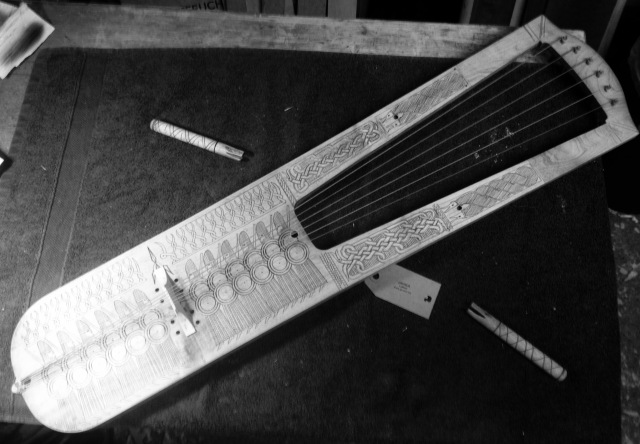
Making photographs for the book
Last year author and museum curator Luit van der Tuuk, asked me to help on one of his book projects. He was commissioned by his publisher to write a part in a series called “Tastbaar Verleden” (tangible past). Dealing about a single artefact its (hi)story.
Luit said that during his meeting with the publisher, he saw two pieces in his livingroom that would make a good subject; one was his model of the “Utrecht Ship”, the other a reconstruction of an early medieval lyre I made a year before. Would it be possible to find enough information to write a book about these instruments?
When we started our journey, it soon became apparent that there was never a complete and extensive study published about these instruments. All that we could find were snippets of information. Articles, excavation and conservation reports, dissertations about early medieval music, sometimes even a chapter in a book.
But nothing complete and conclusive. And a couple of major discoveries were done in the last two decades. Even when we were working on the subject, a yoke of a lyre was found in Ribe.
I went into the vaults of my digital library and found the first articles to get us on the road. We searched museum collections and libraries. Made inventories, time tables, drawings and mapped the finds of instruments and their parts. We tried to make distinctions between, or group together different styles and models of lyres. Often reflecting and (dis-)agreeing on the various aspects we found.
Luit also investigated the social and cultural context in which lyres were played. The societies of the Merovingians and Anglo-Saxons, their music and musical traditions.

One of the finished lyres on the bench
As a part of the project we decided to make a couple of lyres. Two close reconstructions of the most complete (and also earliest) example found: The so called Trossingen Lyre. We decided to try to make it as authentic as possible, use all the original wood species, reconstruct decorations and experiment with strings and setups.
Another handicap I adopted was to experiment with period tools and techniques, in order to find out what consequences they have for the form, function and building methods of the instrument. This meant making most of the tools myself.
During the process Luit has published a series of blogs on the Trossingen lyre. For those who speaks Dutch they are available on his blog Vikinglanghuis. And for who still haven’t learned the darned lingo, I will make an English translation and publish them here.

For now, here are some pictures of the results. I’ve made two versions; a reconstruction of the lyre how it must have looked when it was new, and one how it looked when it was left in the grave.
The release of the book is planned for June, 2019. It will be presented at the Viking Festival in Prehistorisch Dorp Eindhoven.

You do the most interesting projects, although some might find the research tedious. Keep at it. IO’m a blog fan and await each new entry
LikeLike
Hello. Would you know how to find out the exact dimensions of the original Trossingen Lyre?
I would like to build a replica but can not locate these anywhere.
LikeLike
Dear Michael,
You can find my plans for the Trossingen Lyre at http://www.luthierplans.com
LikeLike